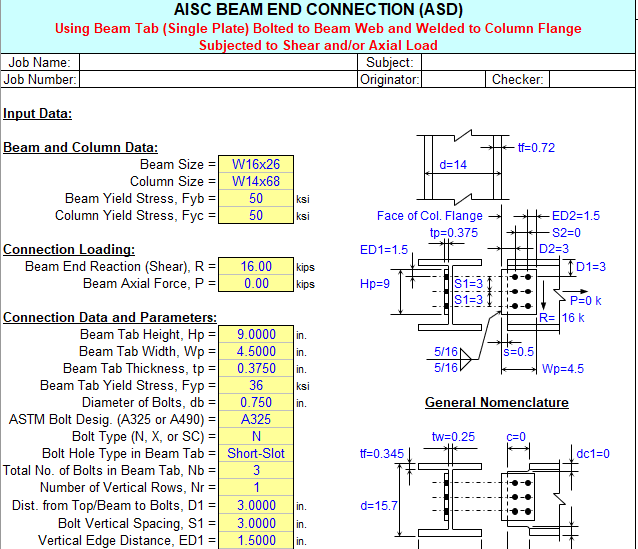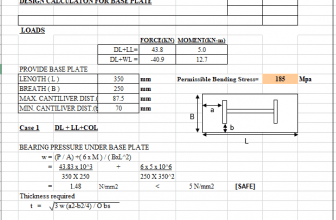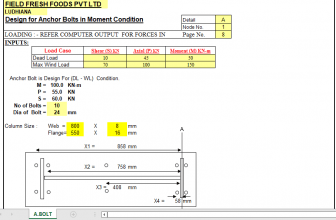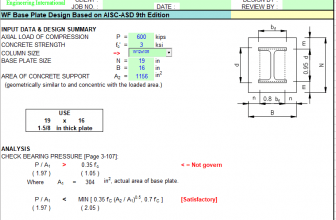
“BEAMTAB” — BEAM END CONNECTION USING BEAM TAB (SINGLE PLATE)
Program Description:
“BEAMTAB” is a spreadsheet program written in MS-Excel for the purpose of analysis of steel beam end
connections using a beam tab (single plate) field bolted to the beam web and shop welded to either the column
flange, column web, or girder web. The connections may be subjected to end shear reaction and/or axial load.
Specifically, all applicable “limit states” for the end connection analysis pertaining to the beam tab (single plate),
bolts, beam web, and either column flange or web, or girder web are checked.
This program is a workbook consisting of four (4) worksheets, described as follows:
Worksheet Name Description
Doc This documentation sheet
Beam Tab(Col Flg) Beam tab bolted to beam web and welded to column flange
Beam Tab(Col Web) Beam tab bolted to beam web and welded to column web
Beam Tab(Girder) Beam tab bolted to beam web and welded to girder web
Program Assumptions and Limitations:
- This program follows the procedures and guidelines of the AISC 9th Edition Allowable Stress (ASD) Manual
(1989) and the AISC 9th Edition Manual Vol. II – Connections (1992). - This program uses the database of member dimensions and section properties from the “AISC Shapes
Database”, Version 3.0 (2001) as well as the AISC 9th Edition (ASD) Manual (1989). - This program automatically calculates the beam tab height, ‘Hp’, and the beam tab width, ‘Wp’, based on the
applicable input data. - This program assumes that the a beam tab connected (welded) to a column flange is a rigid connection,
while a beam tab connected (welded) to a column web or girder web is a flexible connection. The applicable
connection design eccentricity, based on either a rigid or flexible connection, is determined from the criteria
in the AISC Connections Manual. - This program assumes that the tension capacity for any “limit state” is reduced by the presence of shear.
For allowable bolt tension in the presence of shear, the “interaction” (combined stresses) is handled directly
by the AISC Code equations. For other “limit states” in combined stresses such as bolt bearing, gross and
net shear and tension, and block shear and tension tearout, the effect of “interaction” is handled by use of
the formula, P/Ra+(R/Rv)^2=1, as suggested from the following reference:
“Combined Shear and Tension Stress” – by Subhash C. Goel, AISC Journal, 3rd Qtr.-1986.
Thus, the reduction factor applied to the tension “limit state” capacity is = (1-R/Rv)^2.
where: R = actual shear end reaction
Rv = allowable shear capacity for the particular “limit state” considered - This program contains numerous “comment boxes” which contain a wide variety of information including
explanations of input or output items, equations used, data tables, etc. (Note: presence of a “comment box”
is denoted by a “red triangle” in the upper right-hand corner of a cell. Merely move the mouse pointer to the
desired cell to view the contents of that particular “comment box”.)





